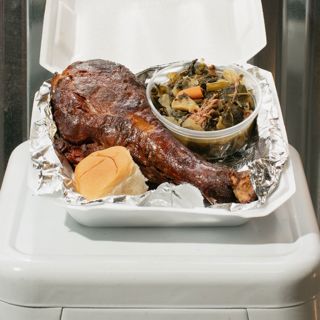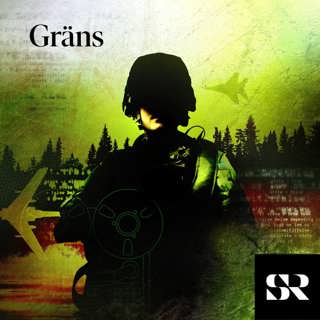
Trump, Tylenol and Autism
During a televised news conference on Monday night, President Trump repeatedly gave out unproven medical advice that linked autism to Tylenol and childhood vaccines.Azeen Ghorayshi, a science reporter for The New York Times, explains what Mr. Trump said and what decades of scientific research actually tells us.Guest: Azeen Ghorayshi, a science reporter for The New York Times.Background reading: Mr. Trump issued a warning based on an unproven link between Tylenol and autism.What to know about painkillers, vaccines, genes and autism.For more information on today’s episode, visit nytimes.com/thedaily. Transcripts of each episode will be made available by the next workday. Photo: Tierney L. Cross/The New York Times Subscribe today at nytimes.com/podcasts or on Apple Podcasts and Spotify. You can also subscribe via your favorite podcast app here https://www.nytimes.com/activate-access/audio?source=podcatcher. For more podcasts and narrated articles, download The New York Times app at nytimes.com/app.
23 Sep 27min

Charlie Kirk’s Politically Charged Memorial
Conservatives from around the country flocked to Arizona on Sunday to memorialize the activist Charlie Kirk. The service included leaders from the highest levels of the U.S. government, including Vice President JD Vance and President Trump.Two clear strands emerged during the memorial addresses: a message of Christian unity, and a vow to fight political enemies on the left.Robert Draper, who covers domestic politics for The Times, explains how the collision of those two messages makes this a crucial moment for the MAGA movement.Guest: Robert Draper, a Washington, D.C.-based journalist for The New York Times, who writes about domestic politics.Background reading: Thousands flocked to Phoenix for Charlie Kirk’s memorial service.President Trump remembered Mr. Kirk as a martyr while attacking political opponents.For more information on today’s episode, visit nytimes.com/thedaily. Transcripts of each episode will be made available by the next workday. Subscribe today at nytimes.com/podcasts or on Apple Podcasts and Spotify. You can also subscribe via your favorite podcast app here https://www.nytimes.com/activate-access/audio?source=podcatcher. For more podcasts and narrated articles, download The New York Times app at nytimes.com/app.
22 Sep 31min

Sunday Special: What Makes a Restaurant Great?
This month, The Times released a list of the 50 best restaurants in America. The Food desk’s reporters, critics and editors crisscrossed the country from Portland, Ore., to Deer Isle, Maine, to scout places formal and casual, big and small, experimental and classic. Their survey is an evocation of what it’s like to dine out, right now, in America.On today’s episode, Gilbert sits down with the Food reporters Priya Krishna and Brett Anderson, two contributors to the list, for a veritable feast of dining wisdom. They discuss what makes a restaurant worthy of the 50 best list, how they go about finding those restaurants, and the dining trends they’re loving and hating in 2025.On Today’s Episode:Priya Krishna, reporter and video host for New York Times Food and CookingBrett Anderson, reporter for New York Times Food and CookingBackground Reading:America’s Best Restaurants 2025Photo: Chase Castor for The New York Times Subscribe today at nytimes.com/podcasts or on Apple Podcasts and Spotify. You can also subscribe via your favorite podcast app here https://www.nytimes.com/activate-access/audio?source=podcatcher. For more podcasts and narrated articles, download The New York Times app at nytimes.com/app.
21 Sep 1h 1min

'The Interview': How Reese Witherspoon Figured Out Who She Really Is
The actor and producer booked her first big role when she was 14 years old. More than 30 years later, she’s an entertainment-industry powerhouse.Thoughts? Email us at theinterview@nytimes.comWatch our show on YouTube: youtube.com/@TheInterviewPodcastFor transcripts and more, visit: nytimes.com/theinterview Subscribe today at nytimes.com/podcasts or on Apple Podcasts and Spotify. You can also subscribe via your favorite podcast app here https://www.nytimes.com/activate-access/audio?source=podcatcher. For more podcasts and narrated articles, download The New York Times app at nytimes.com/app.
20 Sep 51min

Jimmy Kimmel and Free Speech in the United States
The aftermath of Charlie Kirk’s assassination and the suspension of late-night host Jimmy Kimmel are creating concerns and conversations about the state of free speech in the United States.Rachel Abrams, Jim Rutenberg, Jeremy W. Peters and Adam Liptak, all journalists for The New York Times, discuss Mr. Kimmel’s removal and why the action is provoking fears and applause from different camps of a polarized country.Guest:Jim Rutenberg, a writer at large for The New York Times and The New York Times Magazine.Jeremy W. Peters, a national reporter for The New York Times who focuses on free speech and the politics of higher education.Adam Liptak, who covers the Supreme Court and writes Sidebar, a column on legal developments, for The New York Times.Background reading: The Trump administration has wielded its full toolbox to bring media to heel.What to know about “hate speech” and the First Amendment.In Charlie Kirk killing, finger pointing began before the evidence was in.For more information on today’s episode, visit nytimes.com/thedaily. Transcripts of each episode will be made available by the next workday. Photo: Samuel Corum for The New York Times Subscribe today at nytimes.com/podcasts or on Apple Podcasts and Spotify. You can also subscribe via your favorite podcast app here https://www.nytimes.com/activate-access/audio?source=podcatcher. For more podcasts and narrated articles, download The New York Times app at nytimes.com/app.
19 Sep 30min

The Fired C.D.C. Director Testifies
For weeks, fights have been escalating between top scientists at the Centers for Disease Control and Prevention and the health secretary, Robert F. Kennedy Jr., culminating in his accusation that the agency’s top official, Dr. Susan Monarez, was untrustworthy.Dr. Monarez went before a Senate committee on Wednesday to give her side of the story.Sheryl Gay Stolberg, who covers health policy for The New York Times, discusses the testimony and the rift that the hearing exposed within the Republican Party over how far to go to support Mr. Kennedy and his vaccine agenda.Guest: Sheryl Gay Stolberg, a correspondent based in Washington who covers health policy for The Times.Background reading: The fired C.D.C. director described clashes with Mr. Kennedy and turmoil at the agency.For more information on today’s episode, visit nytimes.com/thedaily. Transcripts of each episode will be made available by the next workday. Photo: Kenny Holston/The New York Times Subscribe today at nytimes.com/podcasts or on Apple Podcasts and Spotify. You can also subscribe via your favorite podcast app here https://www.nytimes.com/activate-access/audio?source=podcatcher. For more podcasts and narrated articles, download The New York Times app at nytimes.com/app.
18 Sep 29min

The Plan to Turn Charlie Kirk's Murder Into a Crackdown on the Left
On Tuesday, prosecutors charged the man suspected of killing Charlie Kirk with aggravated murder, vowed to seek the death penalty and released a mountain of new evidence against him.Jack Healy, who has been covering the killing of Mr. Kirk for The New York Times, explains what the police have uncovered about his motives. Kenneth P. Vogel, an investigative reporter, discusses the emerging White House plan to use the federal government to crack down on the left-wing groups that it believes inspire political violence.Guest:Jack Healy, a reporter for The New York Times who writes about the changing Western United States and its political divisions.Kenneth P. Vogel, a reporter based in the Washington bureau of The New York Times who investigates the intersection of money, politics and influence.Background reading: The suspect in Mr. Kirk’s killing faces an aggravated murder charge, and the death penalty.President Trump has invoked Mr. Kirk’s killing in justifying measures to silence his opponents.For more information on today’s episode, visit nytimes.com/thedaily. Transcripts of each episode will be made available by the next workday. Photo: Loren Elliott for The New York Times Subscribe today at nytimes.com/podcasts or on Apple Podcasts and Spotify. You can also subscribe via your favorite podcast app here https://www.nytimes.com/activate-access/audio?source=podcatcher. For more podcasts and narrated articles, download The New York Times app at nytimes.com/app.
17 Sep 34min

Trapped in a ChatGPT Spiral
Warning: This episode discusses suicide.Since ChatGPT began in 2022, it has amassed 700 million users, making it the fastest-growing consumer app ever. Reporting has shown that the chatbots have a tendency to endorse conspiratorial and mystical belief systems. For some people, conversations with the technology can deeply distort their reality.Kashmir Hill, who covers technology and privacy for The New York Times, discusses how complicated and dangerous our relationships with chatbots can become.Guest: Kashmir Hill, a feature writer on the business desk at The New York Times who covers technology and privacy.Background reading: Here’s how chatbots can go into a delusional spiral.These people asked an A.I. chatbot questions. The answers distorted their views of reality.A teenager was suicidal, and ChatGPT was the friend he confided in.For more information on today’s episode, visit nytimes.com/thedaily. Transcripts of each episode will be made available by the next workday. Photo: The New York Times Subscribe today at nytimes.com/podcasts or on Apple Podcasts and Spotify. You can also subscribe via your favorite podcast app here https://www.nytimes.com/activate-access/audio?source=podcatcher. For more podcasts and narrated articles, download The New York Times app at nytimes.com/app.
16 Sep 43min





















